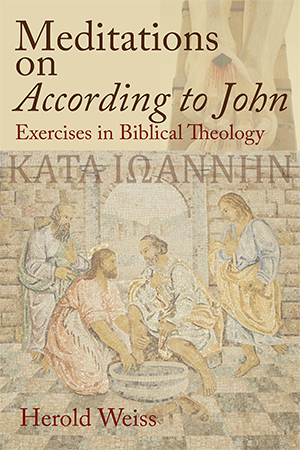Follow-Up to According to John: No One Has Ascended into Heaven
I want to follow up a bit on the study last night. I’ll embed the YouTube below for those who want to view this study after the fact. A few things occurred to me since the study.
 I’m really spending a great deal of time on the use of stories and of metaphors in discussing theology. I’m convinced that we don’t recognize the metaphors we’re using often enough. For example, it’s worthwhile to note that most discussion of substitution occurs inside the metaphor of the courtroom. It’s then important to recognize when a discussion, whether current or in scripture, occurs within another metaphor. John 3:16 occurs in a different metaphor, or perhaps more than one, and it comes after John has evoked the story of the serpent in the wilderness (Numbers 21:4-9). In that story, the key line is “look and live.”
I’m really spending a great deal of time on the use of stories and of metaphors in discussing theology. I’m convinced that we don’t recognize the metaphors we’re using often enough. For example, it’s worthwhile to note that most discussion of substitution occurs inside the metaphor of the courtroom. It’s then important to recognize when a discussion, whether current or in scripture, occurs within another metaphor. John 3:16 occurs in a different metaphor, or perhaps more than one, and it comes after John has evoked the story of the serpent in the wilderness (Numbers 21:4-9). In that story, the key line is “look and live.”- It’s very important to distinguish “light” as John uses it from our 20th/21st century use of that metaphor. Yes, that word is another metaphor. Jesus did not claim that he as going to provide physical light to the whole world. The modern tendency is to think of light as information and enlightenment as the reception of information. For John, and for Jesus as represented in this gospel, light is more closely connected to life. To mix the metaphors, you look up at the light as he is lifted up and you live. The healing of the blind man in John 9 links closely to this metaphor. There is light and the ability to see light.
- Metaphors allow us to talk about the same general subject from different perspectives. Thus one can talk about atonement using the metaphor of the battlefield, the courtroom, and the family/community without being contradictory. I would suggest that one shouldn’t mix these metaphors, at least without being very aware of what one is doing and doing so carefully.
- I had an excellent audience question, and this time one that wasn’t in my notes as something I might discuss. Just what was John doing? Jesus speaks so differently from the way he does in the synoptic gospels. Why? It’s a good question, and I went the right direction as I started to answer it. Overnight it occurred to me, however, that the synoptic gospels also had in mind building community. They were just more tied to an existing sayings tradition in doing so. The change, in my view, is one of emphasis. The particular kind of community building involved is one of defining oneself. What is it that we believe as a group that makes us a spiritual/religious community? There is a danger here in following the example of the community reflected in According to John. They are distinguishing themselves from the Jewish community, of which they had previously been members. Who are we apart from being Jews who believe in Jesus? We have to avoid following this line of reasoning to anti-semitism, as Dr. Weiss points out. In addition, however, we need to avoid community building that is done over-against others. There is a certain amount of “and you’re not” when one defines a community. But we need to avoid defining ourselves in a way that reflects negatively on others. The community in John had good reason—they were a persecuted minority. We have less reason.
- I’m very glad for Dr. Herold Weiss as a guide in this study. I’m assuming those who are joining me are reading his essays. He’s much more to the point. I’m adding a good deal of discussion of the nuts and bolts to help people think about their own theology, or at least I hope it helps. This can get boring, but sometimes wading through the nuts and bolts (intentional mixed metaphor!) is precisely what we need to do.
And here is the YouTube embed for those who may have missed it:

All of your videos on “According to John” keep begging this question: Salvation from what and for what? It seems to me that whatever atonement theory you accept, it must answer this. For example, penal: “You’re going to hell; Jesus took your place; tell others.” I think Luke and Mark teach the “moral influence” theory that yields quite a different answer to from what and for what. You began to unpack an answer in yesterday’s session with the “lifted up” metaphor, yet it is still unclear to me what you think John is trying to accomplish. As with most “big ideas,” it takes time to build to the “reveal.” I’m looking forward to that moment.
Somewhere along the line, I read/heard that “Any religion that promotes fear of hell isn’t worthy.” I like Wm. Barclay’s view, “If there is a hell, its purpose is purely redemptive.” Hell is not a viable notion for me. So I reject any theory of being saved from hell. Except, of course, if you consider the various “hells” on earth. Now we’re getting somewhere. If congregations functioned with true community where each person lived for the wellbeing of one another, we would be saving people from hell on earth. Not only that, people would be flocking to our doors (as they did to the early church [see Rodney Stark]), but we don’t practice this and they don’t come. Therefore, the moral influence theory works for me, and it appears to be the only “taken for granted” view for the first few centuries. Then Greek categories took over theology, and we have Nicaea, Constantinople, and Augustine. I shudder.
Interestingly, without John, the Synoptics never would have given the Trinity a chance. Many, including John Robinson, have demonstrated that the Prologue of John could easily be understood without recourse to a literal incarnation, an understanding such as Philo and other first century Jews would have found compatible. If that’s the case, then John falls in line with the Synoptics. Michael F. Bird is certainly right in pointing out that many of John’s statement lead to Christological heresies such as Modalism and Tri-theism. He sees, nevertheless, that John provides the blueprint for the Trinity that needed the next couple of centuries to figure out, but there is one text that remains unequivocally insurmountable, in my view: “I am ascending to your Father and my Father, to my God and your God.” This is wholly in line with a Synoptic Jesus.
Too much of interpreting John is anachronistic—we assume the findings of the counsels and read them back into the gospel. I like what you are doing to help us see the struggle going on within the Johannine community to answer the question, “Who are we, now that we are no longer of the synagogue?” The answer just might help us discern who we are today.
Those are some really good questions. Just as soon as I’ve figured out the answers, I’ll reveal them! 🙂
Seriously, I am learning a great deal through this process, and so I’m leaving quite a number of issues as open as I can. Obviously each person can make up his or her mind, regardless of how open I leave things. But some of them I’m leaving open for myself.
I suspect, however, that what salvation is from and for will differ along with all the other elements.
Do you take the words “who is in heaven” in 3:13 to be original? Just curious, as it seems to affect the thrust of the verse.
Sneaky asking that question when you’ve written a journal article about it. 🙂
My conclusion, which I came to prior to finding reference to your article, is that “son of man who is in heaven” best explains the other variants, and that there is more than sufficient external evidence to justify following the logic here. I’d love to get my hands on a copy of your article and check your reasoning.
I would note that I think it’s marginally possible, though I can see arguments against it, to tie this to verse 11-12, in which I hear a later voice, i.e. comment from the time when the gospel was written, rather than a quotation of Jesus. If that were the case, then the potential difficulty would not exist, as this would me no more than an affirmation of the ascension.
I have now located Dave Black’s article on this online. While on my current computer the Greek text does not render properly, one can still follow the article quite well, including the variants as necessary. I’m going to promote the discussion to a new post.